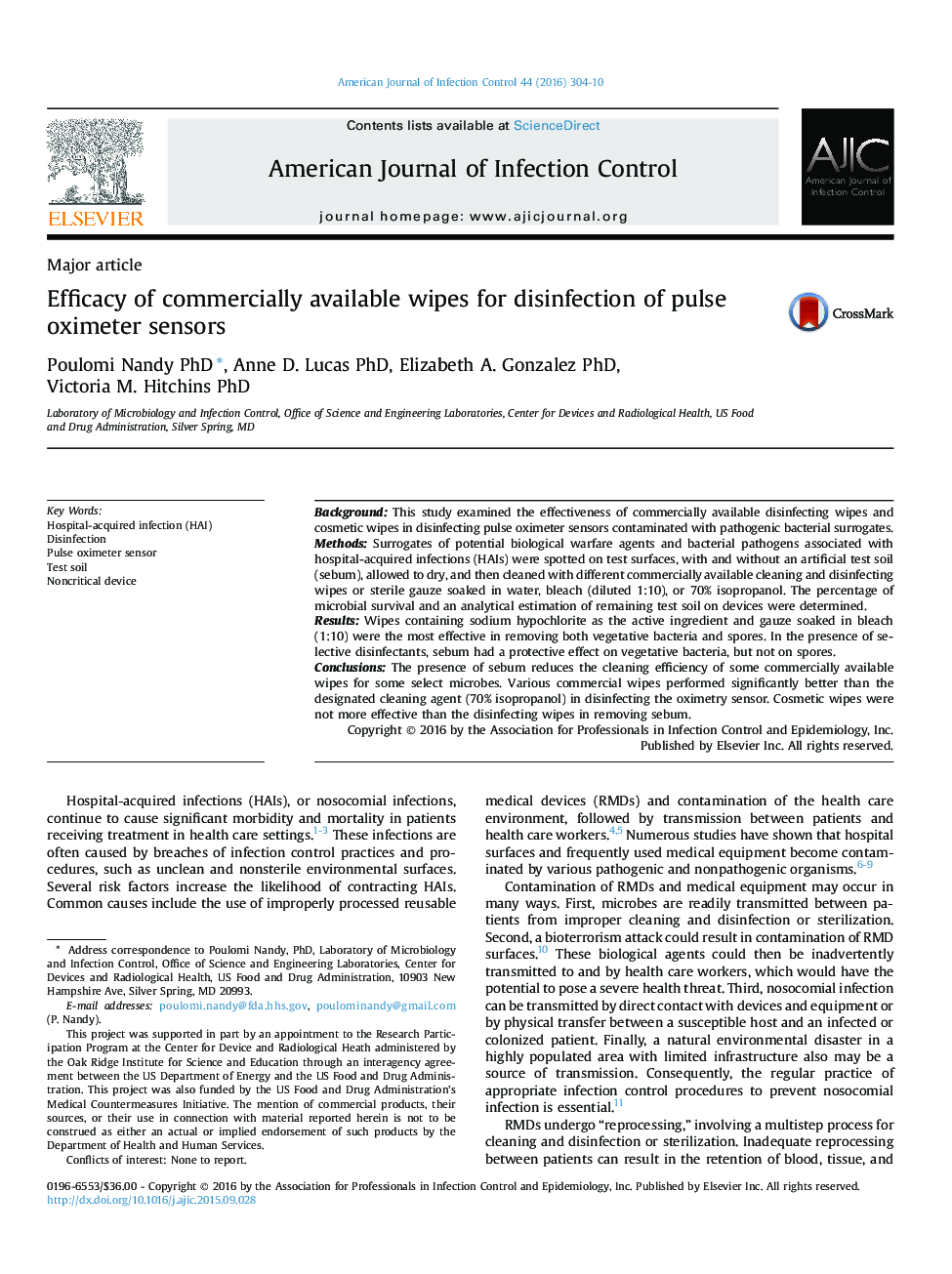| کد مقاله | کد نشریه | سال انتشار | مقاله انگلیسی | نسخه تمام متن |
|---|---|---|---|---|
| 5867481 | 1563462 | 2016 | 7 صفحه PDF | دانلود رایگان |
BackgroundThis study examined the effectiveness of commercially available disinfecting wipes and cosmetic wipes in disinfecting pulse oximeter sensors contaminated with pathogenic bacterial surrogates.MethodsSurrogates of potential biological warfare agents and bacterial pathogens associated with hospital-acquired infections (HAIs) were spotted on test surfaces, with and without an artificial test soil (sebum), allowed to dry, and then cleaned with different commercially available cleaning and disinfecting wipes or sterile gauze soaked in water, bleach (diluted 1:10), or 70% isopropanol. The percentage of microbial survival and an analytical estimation of remaining test soil on devices were determined.ResultsWipes containing sodium hypochlorite as the active ingredient and gauze soaked in bleach (1:10) were the most effective in removing both vegetative bacteria and spores. In the presence of selective disinfectants, sebum had a protective effect on vegetative bacteria, but not on spores.ConclusionsThe presence of sebum reduces the cleaning efficiency of some commercially available wipes for some select microbes. Various commercial wipes performed significantly better than the designated cleaning agent (70% isopropanol) in disinfecting the oximetry sensor. Cosmetic wipes were not more effective than the disinfecting wipes in removing sebum.
209 (1) Spot of either vegetative bacteria (Gram-negative bacilli or Gram-positive cocci) or spores (Gram-positive) on pulse oximeter sensor surface. (2) Addition of the same microbes diluted in artificial test soil (sebum:glycerol, 1:1) and spotting them similarly on the test surface. (3) Drying at room temperature for 1Â hour. (4) Cleaning and disinfection of the test surface using water, 70% isopropanol, 1:10 bleach, or commercially available disinfecting and cosmetic wipes; swabbing the test surface after the exposure time and dipping the swabs in tubes containing PBS after the exposure time. (5) Microbial recovery estimated by plating the PBS extract and calculating the CFU/mL of the surviving microbial population; the remaining amount of sebum was estimated by the lipase assay (Materials and Methods). (6) Rewiping with sterile alcohol wipes followed by UVC irradiation. (7) Sterilized and ready for the next set of experiments.
Journal: American Journal of Infection Control - Volume 44, Issue 3, 1 March 2016, Pages 304-310
